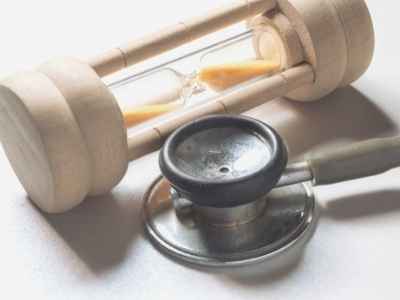Most people assume that they only need treatment when they have an injury, but what about treatment when you’re feeling good? Is there any use to this or is it just a waste of time? Let’s take a look at some of the criticisms and the advantages of this approach to treatment.
Most people will take the car to a mechanic and ask for a service when the car is generally in good condition, you wouldn’t take your car to a mechanic and ask for a service if the car’s broken down. The mechanic would first have to fix the problem, get your car back out of the road, and then resume your servicing schedule. You can see where this analogy is going.
Disclaimer: This is for Educational Purposes Only
Let me take a quick intercession to inform you as to the nature of our advice. We are experienced, healthcare clinicians. We wish to share our experience with you on topics to do with your health. We may be a little colourful in doing so, but at the heart of what we do is in-the-trenches experience. Whilst we have achieved academic success and understand the evidence, we are not solely evidence-based. We are, however, EVIDENCE INFORMED.
We find that the evidence is usually 10-15years (at minimum) behind what we are seeing in the clinic. We see real people, with real problems, and we’ve made a great living out of offering real solutions.
If all you’re after is the researched evidence, you can find some on Google Scholar, or you can very easily look for more on Google. We want to give you real-life advice, most of which you may not find in the research.
There is no way that this document can replicate or replace expert assessment and guidance given by a qualified registered healthcare practitioner who has seen you personally. I am sure you’re aware that I have no knowledge of your personal medical history or how you take care of your body. If you require care from a qualified practitioner, you would be best served by seeing someone who can empathise with your situation and treat you accordingly.
I’m sure you understand that I disclaim any and all responsibility for anything you do as a result of reading this document. And by reading this article, you accept 100% responsibility for the actions of you or anyone under your care.
But let’s take a step back here. The argument against this analogy is that the body has a self-healing capability, whereas a car doesn’t. Yes, the body can heal itself, and actually, it can do a whole lot more. It can also regulate and adapt itself so that any constant stress has less effect on the system. These stresses are not just physical, but mental and emotional also, but for our purposes today, our services are mainly concerned with the alleviation of physical stress.
The body’s self-regulation we discussed reduces the performance of the body because it has to account for consistent external stress. We don’t prefer this reduction in performance because well, it’s not optimal, and it can lead to injury when the stress is too high for regulation to occur.
But there are a couple of more criticisms to this approach. One, that it’s unnecessary. And two, that it’s unethical. Why would you take someone’s money and treat them when they aren’t in pain and they really don’t need it?
Let’s look at the first criticism of it being unnecessary. Whilst unnecessary can mean different things to different people, let’s try and be as objective as we can about the topic. To make the matter less complicated, the most up-to-date information we have about pain science is that the perception of pain by the brain can be looked at as a set of scales. On one side you have safety signals and on the other, you have danger signals. When the danger signals outweigh the safety signals, pain is perceived in the brain and quite simply, you feel pain.
The danger signals can be anything from trauma, constant mechanical loading, mental stress, and even poor habits and perceptions you’ve built over time. The question now becomes, how qualified is the therapist at identifying the physical danger signals and do they have a track record of actually doing what they claim to do? There’s no evidence other than our own anecdotal evidence to rely on to be able to answer this question, and if hardcore evidence is your measuring stick, you will probably feel that the treatment is unnecessary.
But here’s the funny thing…we never question if the laws of gravity and the mechanical laws governing the universe exist. We assume they do. We quantify them. And we also have to assume that they act on the human body since we are a part of that universe. So movement can be identified and quantified. But can it be rectified or improved? Well, to the extent that mechanical laws can act equally on the relevant parts of the body, yes they can. Unequal distribution of force can be understood as asymmetry, and that is what we are specifically trained to identify and help correct. Pain science is telling us that these things affect danger signals and lead to pain. So by identifying and preventing them, there is a very valid argument that preventative treatment is necessary and in-fact desirable.
So in summary, you can hide behind a lack of existing evidence for preventative treatment and claim it’s unnecessary. But you would also have to disregard the laws of the universe governing movement. You can’t have it both ways!
What about the claim that it’s unethical to charge people money for treatment that can’t be substantiated to be necessary? Well, if you still feel that the treatment is not required or beneficial then you will continue to be convinced that treatment is unethical. But if you’ve come to the conclusion that preventative treatment is beneficial, then not only does treatment become ethical, it’s actually a disservice to the patient not to advise them of this strategy.
Without even considering the health benefits (of which we will get to) the time and cost savings alone are worth the investment. For treatment when pain sets in, a condition could take between 4-6 sessions to alleviate the pain. It might cost you anywhere between four to six hundred dollars over the space of about two to three weeks. Now if you spread that out over the year and you have say four to six treatments over the space of a year, well that time and money are now spread out and it becomes more time and cost-effective.

From a health perspective, preventative treatment is win-win for everybody. The patient benefits from improving mobility and symmetry of movement, and not having to put up with debilitating pain. We are able to keep those danger signals at bay. At least the ones we can control. Good practitioners are able to do this because they have built up a skill set over time in identifying and correcting poor movement patterns. We appreciate doing this because, well for us, it’s easier on our bodies and brains. And like any profession, some are able to do it more effectively than others.
One of the other benefits from a health perspective is it allows you to shift your mindset from just managing and helping yourself with injuries to actually optimizing your health. We can start to help you with your diet, we can start to help you with your training so that you improve your strength and stop these mechanical strains from coming on in the first place.
Treatment, when you’re feeling good, is, in an ideal world, what we would like for all our patients. But that’s just going to happen. In reality, what really teaches a person most effectively to have preventative treatment is – unfortunately – pain and suffering. Most people are stubborn, and won’t buy-into preventative treatment until they’ve been floored by debilitating pain at least a few times. That’s the unfortunate truth.
We encourage you not to let pain smack you around for a few years before you have preventative treatment. We can never guarantee a pain-free life. But one thing we’re sure about is it’ll take a lot more to hurt you. If you understand how treatment can help you when you’re feeling good you can utilize this to your benefit. Stay Strong!
If you feel that any of the information we’ve given you here resonates with you and you feel we are in a position to help, please BOOK ONLINE as we would welcome the opportunity. If you feel that we can help you in any other way, please reach out to us via our CONTACT PAGE.

Dr. Sami Karam, Osteopath
I’ve been a qualified Osteopath since 2004. I’ve been playing football ever since I could remember and I have a passion for it. I’ve played at the highest level in the NSW State League at both Youth and Senior levels, and have also been Head Physician at numerous State League Clubs. I’ve travelled internationally and consulted with Sports academies in Barcelona and Italy. I have a special interest in Strength and Conditioning for footballers, as I believe it gives them an edge in their physical competition. My passion involves bringing all of this knowledge into every single treatment that I provide for all athletes. If you feel that I can help you and want to reach out to me, contact me.



